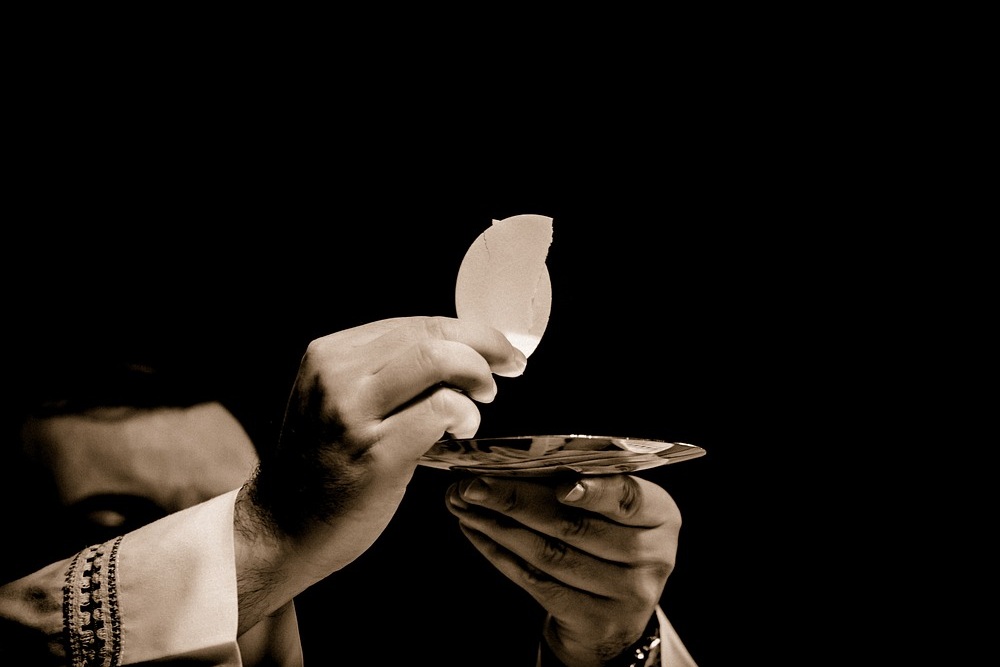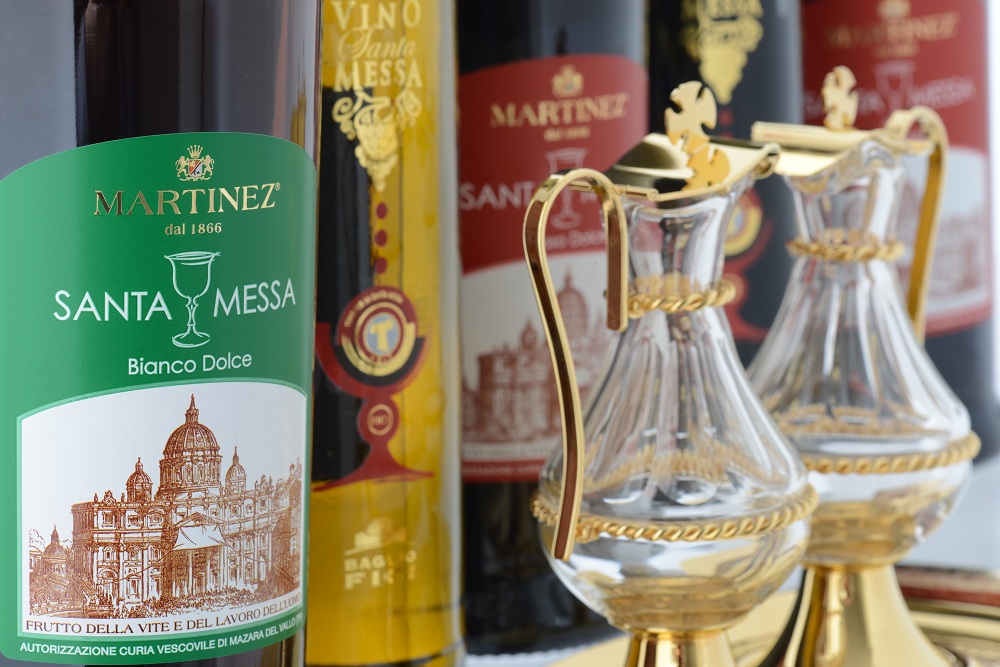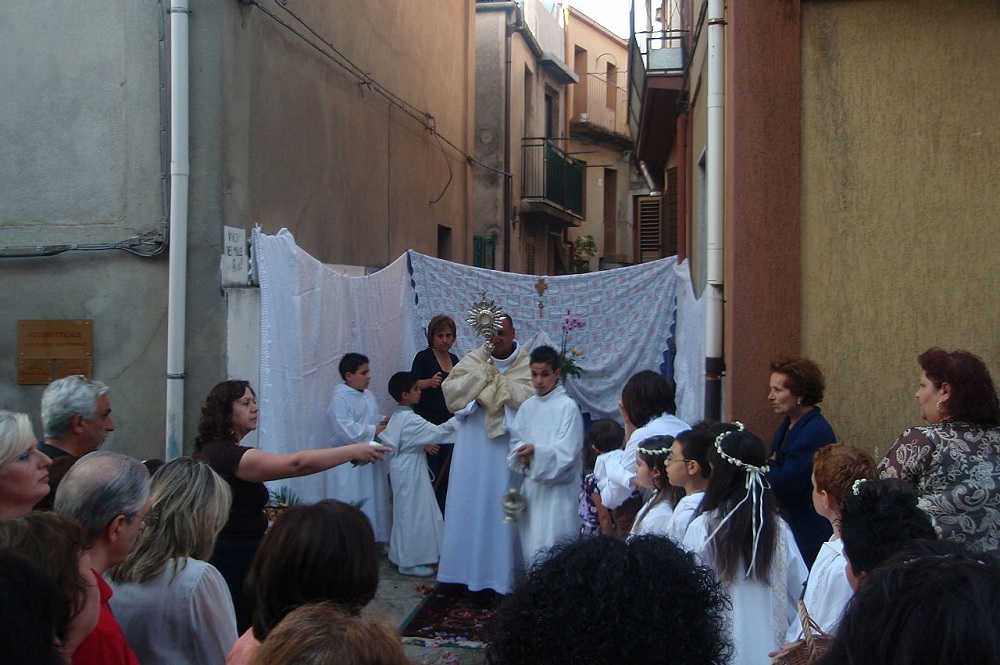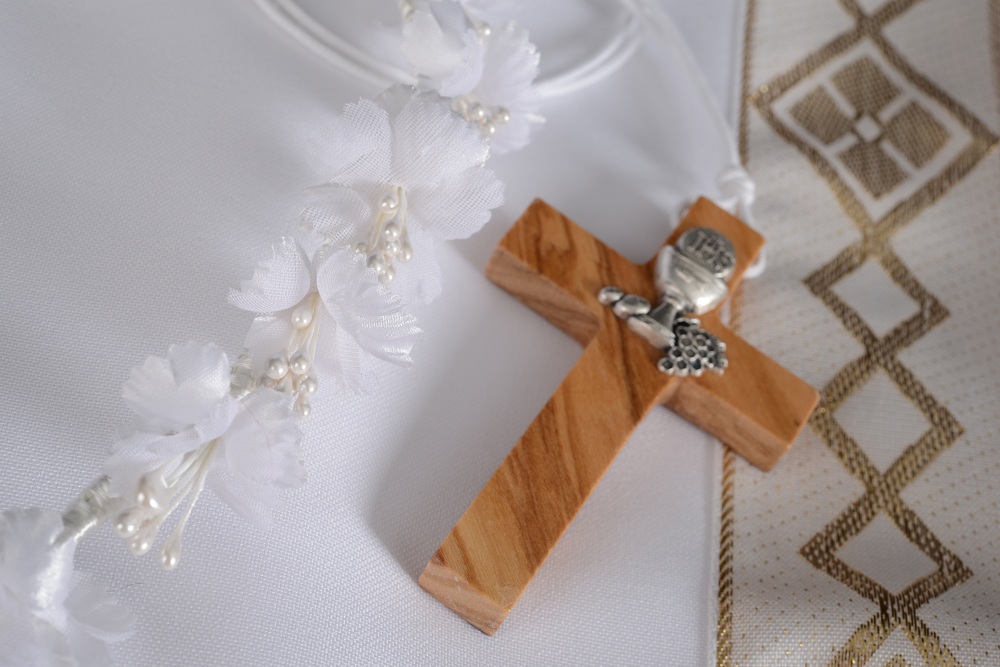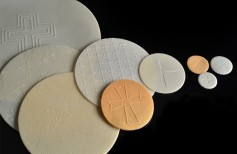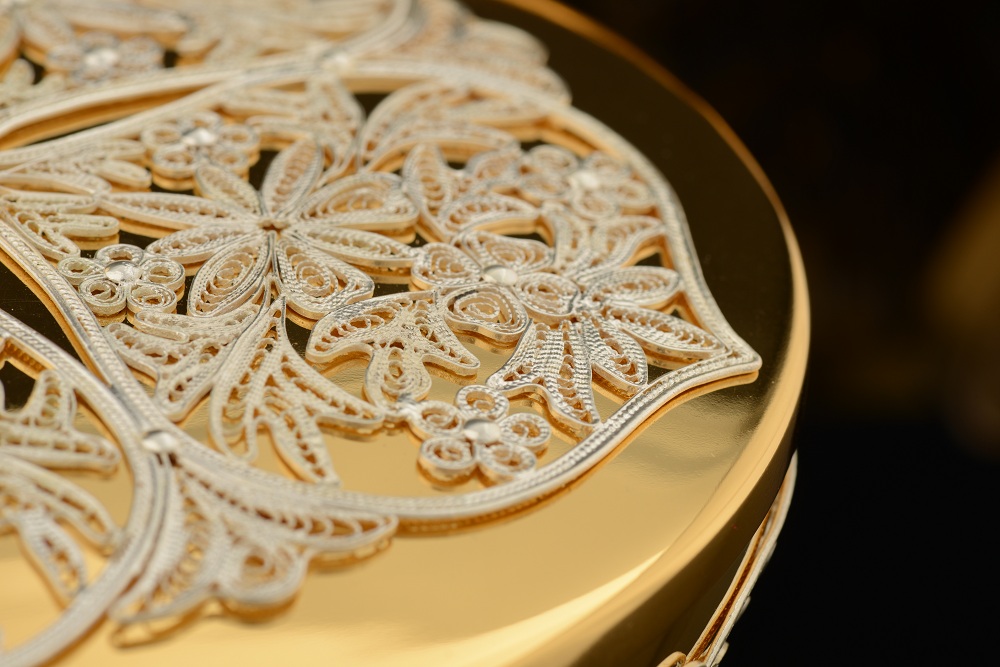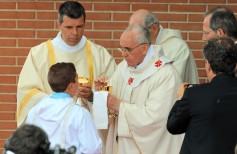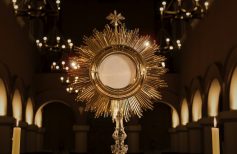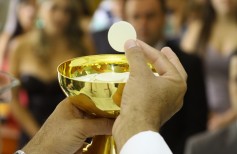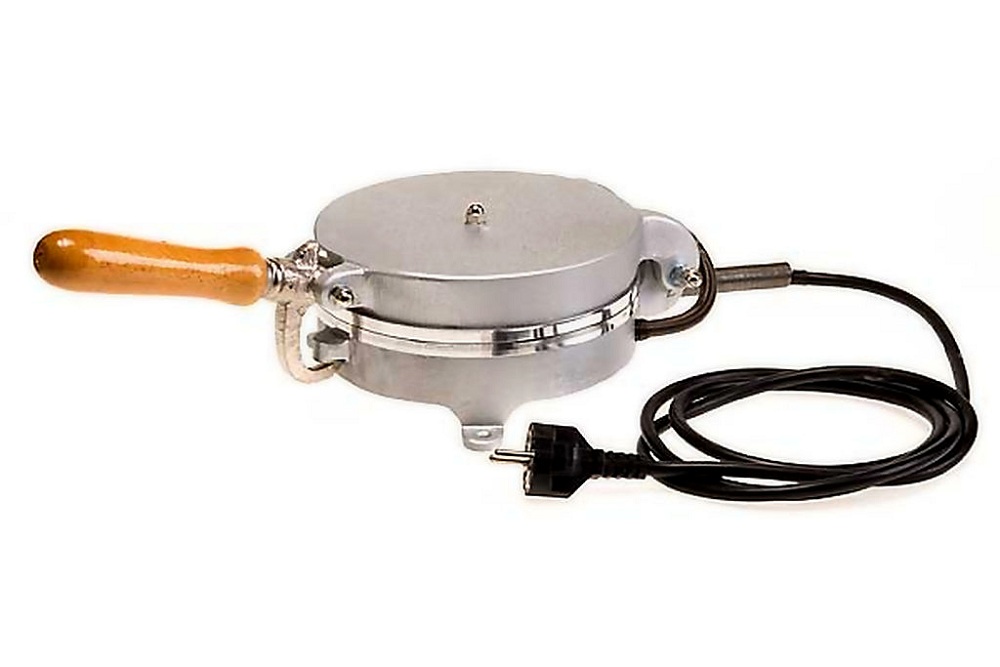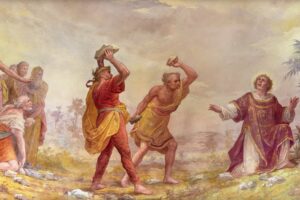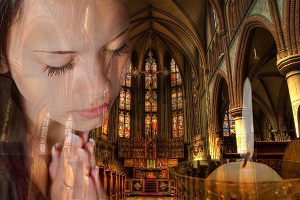The host is the unleavened bread that symbolizes the body of Christ during the celebration of the Eucharist, the celebration which started by Jesus during the Last Supper. In fact, the host is not just a vehicle between us and Jesus, but, after the consecration it becomes his body. During the Last Supper, Jesus offered his disciples bread and wine as his body and blood, inviting them to do the same in the centuries to come, to renew his sacrifice for the salvation of men. The Eucharist is therefore one of the fundamental celebrations of Catholicism, a moment when Jesus returns to become a man and to sacrifice himself for all his children once again. In Catholic and Orthodox Church the transformation of bread into the body of Christ is called ‘transubstantiation’, and in Protestant Christian Churches ‘ Consubstantiation’.
In Eucharistic celebration, the host is made of wheat, and is usually round. It takes its name from the Latin word ‘hostia’: a sacrifice to the gods. It is made with unleavened bread as required in the Exodus book. The Easter Jewish required unleavened bread and bitter herbs for dinner too, to remember the liberation from Egypt. Christian Easter, which resumes every Eucharistic celebration, marks the renewal of the new covenant through the body and blood of Christ.
Only in the Catholic Church the sacred bread becomes the Holy Eucharist and is offered to the faithful. The hosts left are kept in the tabernacle and can be regarded as Jesus himself.
Every Eucharist is a celebration of immortality and communion with Christ, who offers himself as nourishment to men and to the Church.
Thomas of Aquino wrote in the Sacramento Altaris that in every Eucharist some miracles were performed: bread is the true Body of Christ, equal to that born and to the spiritual body of the risen Christ; all the substance of bread has been transformed into Christ, therefore the bread as such no longer exists; the substance of bread is transformed into the Body of Christ, but the inconsistencies remain, the qualities of bread, which, however, does not duplicate or diminish, remains the same and intact, even when eaten by the faithful; bread as Body of Christ is present simultaneously everywhere the Eucharist is celebrated.

